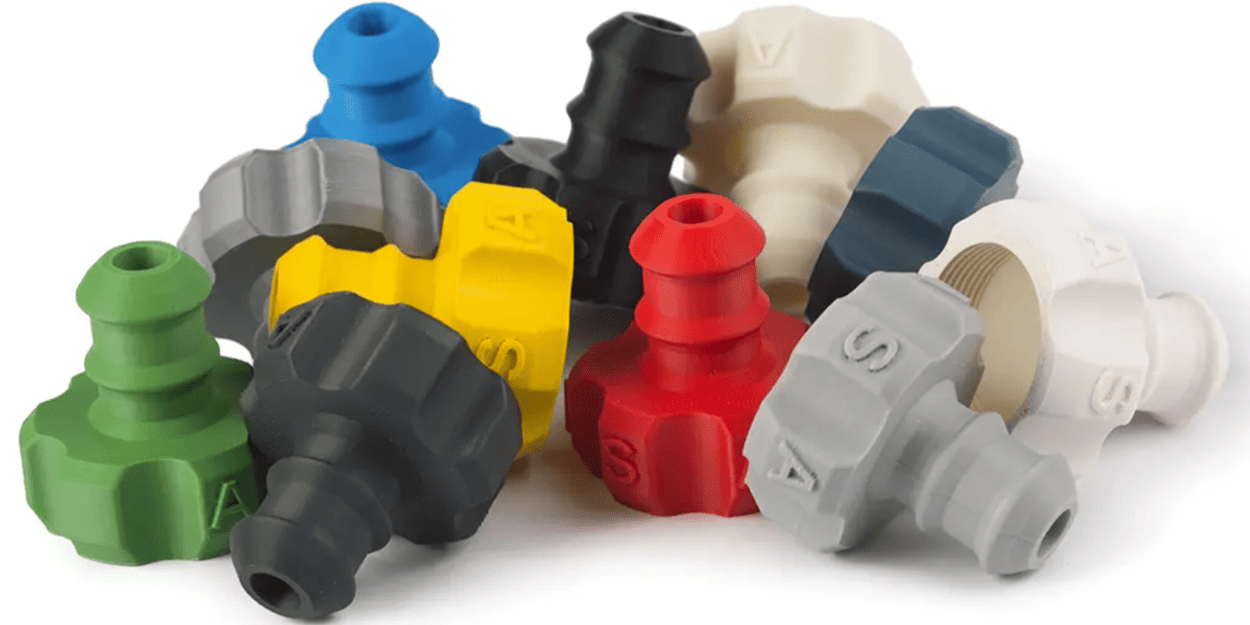Banner Image Courtesy of Fillamentum
What Is ASA Filament?
ASA (Acrylonitrile Styrene Acrylate) is an engineering-grade thermoplastic designed as an outdoor-friendly alternative to ABS. Chemically similar to ABS, ASA replaces the butadiene rubber component with an acrylic ester, which delivers much better resistance to UV light, color fade, and long-term weathering.
ASA is available in pure grades and blends (ASA+PC, ASA with fiber or mineral fillers) and is formulated for mechanical strength, heat resistance, and dimensional stability in outdoor or high-UV environments. Because it behaves like ABS in printing but holds up far better in sunlight and rain, ASA is a go-to choice for functional, exposed parts.
Key Material Properties
1. UV and Weather Resistance: ASA resists fading, cracking, and embrittlement under sunlight far better than ABS.
2. Good Mechanical Strength: ASA offers solid tensile strength and impact resistance suitable for functional parts.
3. Thermal Performance: Glass transition temperature typically around 100–110°C, making ASA more heat-tolerant than PLA and PETG, though below PC.
4. Dimensional Stability: When printed correctly (heated bed + enclosure), ASA produces stable parts with low warp relative to ABS.
5. Chemical Resistance: Reasonable resistance to oils and mild chemicals; strong solvents can attack the polymer.
6. Surface Finish and Paintability: ASA sands and paints well; it accepts primers and automotive paints for color matching and weatherproofing.
7. Hygroscopic: ASA is less hygroscopic than Nylon, but storing it sealed with desiccant is still best practice to prevent moisture-related defects.
Pros and Cons of 3D Printing ASA Filament
|
Pros |
Cons |
|
ASA offers excellent UV and weather resistance, making it ideal for long-term outdoor use. |
ASA emits noticeable fumes during printing, so good ventilation or filtration is recommended. |
|
ASA provides mechanical strength and impact resistance comparable to ABS for functional parts. |
Successful ASA prints typically require an enclosed build chamber to prevent warping and delamination. |
|
ASA maintains dimensional stability and resists color fading under sunlight better than ABS. |
Printing ASA needs higher nozzle and bed temperatures than PLA or PETG, requiring a reliable hotend and heated bed. |
|
ASA sands and paints well, allowing smooth, durable finishes suitable for consumer-facing parts. |
Some solvents and adhesives can cause stress cracking, so choose bonding chemicals carefully. |
|
ASA is available in reinforced and blended grades for tailored stiffness, toughness, or heat performance. |
ASA has a steeper learning curve than hobby filaments and is not recommended for absolute beginners. |
|
ASA balances outdoor performance with good thermal tolerance, suitable for many exterior housings and fixtures. |
Filament should be stored sealed with desiccant, since moisture can still affect print quality over time. |
Recommended Printer Settings
1. Hotend / Nozzle: All-metal hotend recommended; nozzle 0.4 mm common.
2. Extrusion Temperature: 230–260°C (start mid-range and tune for flow and surface).
3. Bed Temperature: 90–110°C depending on blend and adhesion surface.
4. Enclosure: Strongly recommended as it maintains ambient chamber temp to reduce warping and layer stress.
5. Print Speed: 30–60 mm/s; slow down for small features and improve interlayer bonding.
6. Layer Height: 0.12–0.28 mm (0.16–0.2 mm balances detail and strength).
7. Cooling: Low to moderate part cooling; many jobs print best with cooling off or minimal (10–20%) to improve layer adhesion.
8. Adhesion Aids: Use a brim or raft for large flat parts; PEI or acrylic/BuildTak surfaces with a thin glue stick or ABS slurry often help the initial layer stick.
9. Retraction: Moderate retraction settings to prevent stringing while avoiding clogged hotends at higher temps.
10. Ventilation: Use local exhaust or an enclosed printer with a filtered outflow to handle fumes.
11. Storage & Drying: Store sealed with desiccant; dry filament at ~50–60°C for 2–4 hours if you see popping, excessive stringing, or poor layer bonding.
Top Applications for ASA Parts
Outdoor Housings and Enclosures
Weatherproof cases for sensors, cameras, garden electronics, and lighting fixtures.
Automotive Exterior & Trim Parts
Durable clips, bezels, and exterior fixtures that require weather resistance.
Signage and Nameplates
Long-lasting outdoor signs and branding elements that keep color and detail.
Marine Components
Non-structural brackets, holders, and fixtures resistant to sun exposure (validate for saltwater use).
Prototypes for Consumer Goods
Functional prototypes that will be tested outdoors or in sunlight.
End-Use Products
Durable outdoor gear, mounts, and any part where UV stability and a finished surface matter.
Try Hi3DP FDM 3D Printing Service
Looking to skip the calibration and dial-in work?
Here’s why thousands of customers trust Hi3DP:
Instant Quotes & Rapid Turnaround: Upload your STL, choose PETG, and get pricing within minutes—shipped in as little as 2 business days.
Quality Assurance: Parts undergo dimensional inspection and strength testing to meet your specifications.
Custom Finishes & Assembly: Post-processing options include sanding, painting, and chemical smoothing. Assembly and kitting services are available for multi-part projects.
Global Shipping & Support: Whether you’re in North America, Europe, or Asia, we deliver reliable quality worldwide.
FAQs
Q: How is ASA different from ABS?
A: ASA is chemically similar to ABS but replaces the rubbery component with acrylic ester, giving ASA much better UV and weather resistance and less fading and cracking outdoors.
Q: Do I need an enclosure to print ASA?
A: An enclosure is strongly recommended to keep ambient temperatures stable and minimize warping and layer separation, especially for larger parts.
Q: Is ASA safe to print indoors?
A: ASA produces stronger fumes than PLA; print with good ventilation or an enclosure with filtration to reduce exposure.
Q: Can ASA be glued or painted?
A: Yes. ASA sands and paints well. Use appropriate primers and paints (automotive-grade if outdoor durability is required) and choose adhesives compatible with ASA.
Q: How should I finish ASA parts for the best outdoor life?
A: Sand, prime with UV-stable primer, and topcoat with UV-resistant paint or clear coat for maximum color retention and protection.














